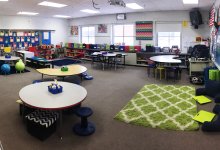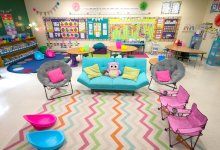The A to Z of Flexible Classrooms
We look at the research, raw materials, and funding options for flexible spaces, and then ask over 20 teachers how they managed the transformation.
Flexible classrooms remain an area of interest—and periodically contention—for our community of educators. Photos of color-coordinated learning environments dotted with cozy nooks for reading and sprinkled with throw pillows tend to provoke mixed feelings, and lots of pointed questions.
How do you fund a flexible classroom, anyway? Do teachers pay for all of this? Can small spaces crowded with 30 or more students really accommodate a variety of seating options? Should I expect new behavioral problems to arise from giving students so much leeway in where to sit and work? Are there any examples in high schools? In science labs?
And then, always, the most critical question of all: Do flexible classrooms even work—do students who have seating choices perform better academically?
We created this flexible seating package as a way to provide a focused response, and to help you get started if you’re considering giving it a try. The package looks at promising, recent research on flexible seating; provides tips for crowdfunding your classroom; and surveys the most popular options for seating, lighting, storage, and fixtures of every kind.
And because our audience demands authentic, reproducible models and strategies, we asked dozens of teachers in flexible classrooms across the country for their best tips, lessons learned, and photos—and then distilled the answers into two articles, one for K–8 teachers and one for high school teachers.





